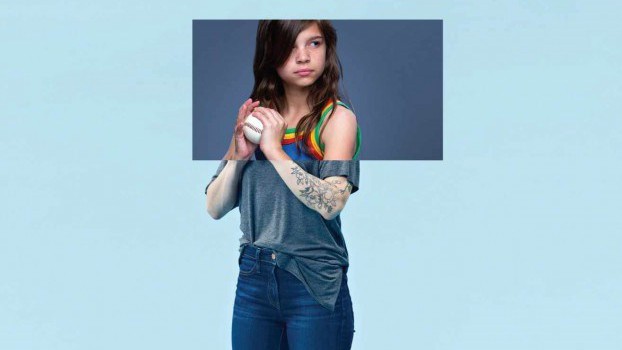The Volkswagen Beetle, which first chugged its way into the North American car market in the 1950’s, never seemed to be in the same league with stretch Fords or Chevrolets from Detroit.
Thanks to advertising, that was the source of Volkswagen’s success.
The story of Volkswagen in this country began in 1952.
Salesperson Werner Jansen and mechanic Kurt Hering arrived in Vancouver with 50 model Beetles, which had been launched in the U.S. three years earlier, and no place to put them.
A Canadian headquarters and a showroom were eventually established on Toronto’s Yonge Street. Finding dealers and distributors for the distinctive looking cars was initially hard – the Beetle’s weaknesses had not yet been turned into strengths.
That part of the story began in New York on Madison Avenue.
In July 1959, Doyle Dane Bernbach (DDB), a young, irreverent ad agency, was awarded the account for Volkswagen, a West German company with limited funds but, ultimately, unlimited faith in great creative work.
The creative work of Bill Bernbach and Ned Doyle, veterans of Grey Advertising who, with Mac Dane, had founded DDB 10 years earlier, on behalf of Volkswagen authored a new standard for advertising.
Work which was honest and factual in tone, employing clean and uncluttered layouts, and appealing to the mind first, through the heart.
Their success came when they turned a frog into a prince – the tiny, squat car, also known affectionately as ‘The Bug, was, admittedly, ugly. Its heater never worked. It barely hit 70 miles per hour on the highway. The driver and passengers almost needed to lean forward while climbing hills.
In time, great advertising made the Beetle a lovable, best-selling import worldwide.
Volkswagen Canada’s advertising effort began modestly.
From 1952 on, an in-house sales promotion department, led by Hal Albrecht, controlled national advertising country-wide, eventually tapping into the work of DDB New York.
There, Helmut Krone, the original art director on Volkswagen ads, had early on produced an innovative design for print ads that established and maintained the Beetle’s lovable image for decades.
The format called for a consistent, to-the-point layout.
To save on marketing costs, Volkswagen bought single-page magazine and newspaper pages, whereas U.S. car makers went for double-page spreads.
The Volkswagen ads contained three columns of body copy comprising 220 words; witty headlines always front and center, and not in odd spots, and a period at the headline’s end to connote a statement, not a news flash.
What is more, unordained photographs of the Beetle filled most of the page.
Volkswagen, which would not have minded pictures of beaming male engineers in white lab coats standing next to it cars, or no one at all, was in contrast to U.S. car makers whose ads showed leggy female models and dutiful housewives in their ads.
Far from turning heads with its car ads, DDB was looking to turn the advertising industry on its ears.
And this it did with the help of Volkswagen, with its passionate commitment to product, and its willingness to buy the highest standard of creative work that never failed to stir reaction.
Bill Wilson, advertising manager with Volkswagen Canada in Toronto, says the car company’s long relationship with DDB is built on mutual respect.
You need faith in the agency, Wilson says. We’re paying them good money. If you tell them what you want, why pay them money? And if they tell you what they think you ought to be doing, you should be listening.
Steve Thursby, art director from 1984-88 on Volkswagen ads at a merged DDB Needham operation in Toronto (during the merger mania of the 1980’s DDB hooked up with Needham Harper Worldwide and eventually that agency became DDB Needham Worldwide as it is known today), agrees.
We had an unusual client-agency simpatico, Thursby says.
We believed in the same thing, ‘How do we sell cars?’ he says They would forget how good they were at making cars. And we would forget how good we were at writing headlines. Together we would figure out how to sell cars.
Allan Kazmer, international creative director at DDB Needham in Toronto, was an early admirer of Volkswagen ads.
In 1960, Kazmer, then a 20 year-old Detroit native, opened an issue of Life magazine to find a Volkswagen ad headlined, of all things, Lemon.
In those day, he says the automotive industry, centered in Detroit, had three bad words.
‘Communist,’ ‘homosexual’ and ‘lemon’. And here was this cheeky ad agency calling a car a lemon.
The strategy behind the Lemon ad was to highlight Volkswagen’s rigorous car inspection procedures.
The idea for the ad came about when Krone, who had before him an ad with a photo of a Beetle and copy which pointed out Volkswagen’s West German inspectors had spotted a chink in the car’s dashboard and repaired it, needed a punchy headline.
DDB Copywriter Rita Selden popped her head around Krone’s door at that moment and, looking at the unfinished ad said, Why don’t you just say Lemon.
Krone did, adding the all important summation, We pluck the lemons; you get the plums.
Kazmer says the honesty and modesty of this and other Beetle ads impressed him most.
No car maker had ever said, ‘Our car is ugly, but it gets you there, he says.
No advertiser had used the word ‘lemon.’ No one talked about zero-defects or warranties like they do today. Then, ads talked about freedom and the open road.
After all, at the time when Volkswagen arrived in North America – the 1950s – the car symbolized more than four-wheel travel.
It represented freedom and the American Way. and the Big Three car makers in Detroit marketed their muscular, gas-guzzling, deep-throated stretch models accordingly.
DDB changed the rules. For one thing, its ads talked to car buyers as people and not consumers. No frills, no unfulfilled promises. A Volkswagen ad was to be, pure and simply, pure and simple.
Bob Levenson, creative director at DDB in New York and one of its most famous writers, argues early Volkswagen ads were meant to treat readers as friends.
My advice was to write a piece of body copy that began with ‘Dear Charlie,’ Levenson says.
And then write what you had to say, he says. Finally, cross out ‘Dear Charlie’ and you would probably be all right.
To increase readability, type-faces for Volkswagen ads were chosen for clarity, not ornamentation. The body copy often had windows and holes.
Copywriters strived for the minimum, the stripped-down, the informal.
Another early admirer of Volkswagen ads was Gary Prouk.
Prouk, the national chairman and creative director of Scali McCabe Sloves Canada who worked under Bill Bernbach of DDB in New York, is not what you would call modest.
Says Prouk: Bill brought us from different countries of the world to New York, taught us what he knew, and then sent us out as apostles preaching this one true religion.
But Prouk is proud of that heritage.
He started on the path that would take him to Madison Avenue in 1963 when he landed a copywriting job at Ronalds-Reynolds in Toronto.
As luck would have it, two years later Volkswagen Canada turned to Ronalds-Reynolds for ads to match the brilliance of print work done by DDB in New York.
Prouk barely had time to prove himself on the Volkswagen account when the summons came to be creative director of DDB Canada’s newly opened office in Toronto.
Suddenly, Prouk, then 26, had apartments in Toronto, Montreal and New York and was commuting between each, clasping a portfolio of ads for Bernbach’s inspection.
It was a crash course in great copywriting.
Says Prouk: it was assumed that every time you produced an ad, it would be a home-run. You needed to get the style down.
Levenson remembers hiring DDB’s youngest-ever creative director with customary self-deprecation.
Maybe I was 29, he says. He didn’t look like much of a kid to me at the time.
Prouk’s first Volkswagen Beetle ad, which he created with art director Andre Morkel, was headlined, New Bug vs. Used Buggy.
Using the language of the boxing ring, the bug, which was noted to be wearing its trunk in the back, was pitted against a used U.S. car.
In the ad, round one went to the Beetle on lower price, round two was won on less fuel consumption, round three on the cheaper cost of tires, and so on.
The ad was classic Bernbach: it turned the product’s weakness into strength.
Clever advertising had positioned the car perfectly among the 1960s counter-culture. The low-cost, no-frills Beetle appealed to those who thumbed their nose at the establishment, young people in particular.
Then, in 1969, Prouk got a call from Bernbach in New York, inviting him to join DDB’s New York office. Prouk’s bags were quickly packed, and his career assured.
Lou DeLamarter III, associate creative director at Robert Kyle ad agency in Toronto, had joined DDB New York in 1967.
DeLamarter had also worked for a time at Volkswagen’s West headquarters in Wolfsburg.
What did those halcyon days mean to his career?
It was like a Montessori school, DeLamarter says. Only the idea in advertising was important. Everything else was window-dressing.
If you had nothing to do, you wanted to go into the DDB office because there were so many colorful, interesting people at work there, he says.
The cult status that has grown up around the late Bill Bernbach, and those who worked with him, has done much to foster the notion of DDB writers and art directors as a chosen lot.
Sometimes he would be reading your body copy, and you would hope to spot a twinkle in his eyes, Prouk says. I just wanted to be good enough to belong at DDB. You always wanted to please Bill.
Levenson recalls that while everyone thought staff at DDB were having a great time, we were breaking our backsides.
Krone agrees.
The good old days aren’t what they used to be. And never were.
Much of Prouk’s early Volkswagen work concerned itself with the harsh Canadian winter.
One effort showed a snowmobile and a tow truck crawling along a snow-swept highway and had as its headline, A great day to test-drive a Volkswagen.
The body copy made much of the Beetle’s rear-wheel drive which meant it fared relatively well in snow.
Another ad, with four photos showing car drivers digging their vehicles out of snow drifts, carried the headline, Think Canadian.
The body copy has that classic Volkswagen we-are-not-boasting-but-we-thought-you-might-want-to-know tone when it says of the Canadian winter: Well, we don’t have a way around it. But we do have a way for you to get around in it: Volkswagen Bug.
Of course, times change. By the early 1970s, emerging competition from Japanese imports was biting deeply into the Beetle’s ownership of the car market’s bottom end.
Plans were put in motion to introduce the Dasher in 1973 and the Rabbit a year later as the first of a new generation of Volkswagen cars.
Prouk recalls feeling it heretical that he would help to kill the Beetle and introduce Volkswagen that went fast, had heaters that worked, and looked much like competing models.
You wanted the Beetle to go on forever, he says. No one wanted to help kill it.
For Prouk, the time to leave DDB came in 1877, when the agency had swelled to become the world’s fourth-largest.
The agency had, by now, helped Volkswagen Canada sell about 250,000 cars since first showing off the Beetle at the Canadian National Exhibition in 1952.
After Prouk’s departure, DDB in Toronto went through a series of writers and ad directors.
The feeling was the agency had lost its way in the mire of new car model introductions. It had been simpler when there was only the Beetle, the Volkswagen van and the Kharman Ghia.
Now, the agency was searching for the glue that would bind the marketing of new Volkswagen models in a consistent and effective manner.
The search began in earnest with the hiring in 1979 of Wayne Twaits as president of the agency.
Twaits at once put out his line to catch a solid creative team and came up with Kazmer then teamed up with art director Brian Harrod.
During the late 1970s, Kazmer and Harrod had been the hottest creative team in Canada while at McCann-Erickson Advertising in Toronto.
Awards poured in for their work on the Levi’s and Christie Brown accounts, among others.
Kazmer was at first hesitant about moving to DDB. Two factors swayed him.
First, he could work on Volkswagen ads, creative with a rich tradition. Second, he was confident Twaits and Volkswagen wanted the best creative work possible.
What did joining DDB mean to Kazmer’s career?
I would not be in advertising if it was not for Bill Bernbach and Volkswagen, he says.
Never having had the money to put himself through college, Kazmer had, upon graduation from high school, joined an insurance agency in Detroit.
There he elbowed his way into the sales and marketing department where he could at least put his writing talents to work.
It was at that point he came upon the Volkswagen Lemon ad and found he was in sync with DDB’s creative revolution in advertising.
I’m convinced I took the DDB job because it was such a high-profile move – busting up a successful team – and if I failed, it would mean public humiliation and embarrassment.
The gamble worked. Kazmer cleaned up.
Bill Smith, the Toronto-based advertising and merchandising manager at Volkswagen, says Kazmer quickly earned the car maker’s respect.
He really understands the VW psyche, and has consistently set high standards through his personal commitment, Smith says.
Twaits remembers Kazmer lobbying early on for a strong art director by his side.
I thought, first, we’ll have to spend yet more money, he says. But then I knew we had brought on board a creative director willing to cement a strong team to do great work.
The result was Paul Cade who followed Kazmer to DDB from McCann-Erickson.
Together, they looked to strong gains in the quality of Volkswagen to reshape the agency and invite new accounts.
This they would do by taking full advantage of Volkswagen advertising’s straight line of descent from Bernbach and Krone through Prouk during the 1970s to the present.
Their reasoning was simple.
Kazmer and Cade felt they could use the warm and fuzzy feeling most people felt for the Beetle to sell a new generation of Volkswagen.
The Beetle may have fallen from production in 1977, but they saw the car’s image very much alive in people’s minds.
DDB Canada needed to tap into that brand loyalty.
Classic Bernbach: sell to the heart, the mind will follow.
And the memory of the Beetle would be the entry point into the heart. It would remind people just how far they and Volkswagen had come.
An example.
An early Rabbit TV spot featured students squeezing into the car as they might have done for fun with a Beetle a decade or so earlier.
Then the voice of the school principal is heard over the intercom, urging everyone out of the car and back into class so people can get a good look at the Rabbit.
Volkswagen was reminding people of the lovable Beetle as they pitched the Rabbit, and eventually a new generation of cars during the 1980’s – the Passat, Jetta, Fox, The Thing, the Corrado.
The idea was not to copy Detroit. Instead, it was to develop a unique image for VW ads by preserving the Bernbach faith and letting rivals copy them.
The result was that where once Volkswagen had sold the Beetle as West German-built machinery, now it would use sentiment to sell its cars.
Kazmer says that what counts is keeping advertising honest and simple. Do not talk down to people, he says.
Kazmer is forever returning to this theme, as do his colleagues at DDB Needham.
No wonder then DDB Needham has consistently produced award-winning Volkswagen ads despite the coming and going of various creative teams.
Everyone knows where they are going with Volkswagen advertising precisely because they know where the tradition of great VW advertising has been.
The irony is, while Kazmer and his team were striving to keep the great DDB tradition alive, Volkswagen advertising in the all-important U.S. market has arguably lost its way.
As it happened, Volkswagen had decided by the late 1970s to make cars in the U.S.
An executive from Chevrolet was hired to lead Volkswagen of America. He urged DDB to open an office in Detroit.
They got cocky, christening one of the cars the Rabbit when it was called the Golf elsewhere in the world. They filled their cars with gadgets, staging midnight madness dealer sales as did rival U.S. car makers.
DDB executives in Detroit were not sold on Kazmer’s strategy. They felt that going back to early Volkswagen ads meant repeating themselves. They looked for innovation.
But, in the process, Volkswagen ads in the U.S. lost the German engineering equals quality feeling Bernbach sold Wolfsburg on in 1959.
Levenson admits DDB’s going native in Detroit hurt its creative output. First class car ads in the U.S. happen on either coast, he says. They don’t come out of Detroit.
Of course, selling Volkswagen Canada on the Bernbach tradition took time. For one thing, Bruno Rubess, company president from 1972-88, forbid the Beetle to appear in any ads.
Says Twaits: When we presented any ad with the bug, Rubess threw us out. He thought the car represented old engineering, and bad engineering. He didn’t want anyone considering buying the new generation of VWs to think they were getting any of the old engineering.
Cade recalls a 1983 presentation he and Kazmer made before Volkswagen’s top marketing brass at Wolfsburg as a turning point.
They essentially articulated then what marketers today take for granted: the importance of establishing and maintaining brand image.
Says Cade: We told them they would not be going backwards. Since 1949, they had been building a brand image. Why walk away from that?
He says Volkswagen’s top marketers were impressed with their argument and the quality of work then being done in Toronto.
And they wondered out loud whether Volkswagen of America ought to be doing the same high quality work.
In 1984, Cade left DDB Canada to pursue a career as a director. His replacement as art director at Kazmer’s side was Thursby, who came over from Saatchi & Saatchi.
Thursby remembers getting that first call from Kazmer, his creative hero.
He said, ‘This is Allan Kazmer. I’m creative director at DDB.’ As if I didn’t know, he says.
Thursby was asked to bring his ad book for view by Twaits.
That impresses me, he says. A president of an agency who wants to see creative work.
Thursby says Twaits and Kazmer fostered a creative environment in which all ideas were wanted, and were valid as those put forward from the top by Kazmer.
One innovation at that time was resurrecting Krone’s original print ad format. Some art directors might have found this limiting, but not Thursby.
This was a huge discipline, he says. The only thing you could rely on was the idea for the ad.
Art directors working on Volkswagen ads had no say in new typefaces, or new layout styles. No window-dressing. They had only to come up with a pure, simple idea that flowed from the car.
Philipe Garneau, another art director at DDB Needham during the late 1980s, agrees substance was prized over style. The idea was the thing.
The frankness and simplicity of language used in VW ads means you need something to say, rather than just saying something well, Garneau says.
That forces everyone to put substance in their copy, he says. It has to add value. It has to relate to the consumer, honestly and directly.
Garneau was among a host of young writers and art directors Kazmer brought on board during the late 1980s to keep the Bernbach tradition alive. And, in the process, their careers were launched.
One prominent team was Marta Cutler and Duncan Bruce, both of whom followed Thursby from Saatchi & Saatchi to DDB.
Bruce, an art director at DDB Needham from 1987-90, remembers a happy confluence of events contributing to his success as a member of Kazmer’s team.
In 1988 Clive Warrilow took over from Rubess as Volkswagen Canada president, and immediately embraced Kazmer’s attempt to restore the Bernbach tradition at DDB Needham.
That meant the Beetle making a welcome appearance in Volkswagen ads, a move applauded by Bill Wilson.
Since 1988, we have consciously said the Beetle is an icon, Wilson says. You will never bury that. So, to the extent it can bring positive feelings back to the VW brand mark, why avoid it? Why not use it?
For example, the 1989 TV spot to introduce the Corrado, Volkswagen’s fastest, sleekest model was a bid by Kazmer, Thursby, Bruce and Cutler to remain true to the tradition of VW ads, yet show the speed and excitement of the new car.
The result was a commercial which asked, through a voice-over, how you make a Volkswagen go 220 miles per hour? The spot showed a Beetle being dropped from the sky by a helicopter, while a Corrado speeds by the crumpled car.
Volkswagen Canada succeeded in selling a fast car, and it drew a smile from viewers as it aimed at the heart. Classic Bernbach.
A three-page print ad during this period also echoes Volkswagen’s past.
The first two pages poked fun at the Beetle, listing the faults which people find endearing. But the ad goes on to say there is nothing wrong with a VW that a bigger trunk, a few more doors, a bigger engine, better brakes, improved suspension and better paint colors cannot fix.
Turning the page, the reader comes across the headline, Done, and the photo of the new Passat, billed as the finest realization of Volkswagen engineering.
In 1988, Thursby left the agency to become a director at Derek Van Lint Associates in Toronto, opening the way for Bruce and Cutler to become main players in producing VW ads.
Volkswagen Canada’s renewed commitment to the Bernbach tradition also meant more money spent on TV advertising.
Notable efforts during this period include the Passat Diner spot, Blind Date and Blue Moon, which highlighted VW’s warranty program.
The 1990 Diner spot was notable because Volkswagen had not introduced a new car for a few years. The strategy was to position the Passat in terms of the car company’s overall stable of models down through the decades.
Diner featured a couple who had not seen each other for some time. As they walk down the street, she asks him whether he is still driving a Volkswagen, meaning the Beetle he had when she last knew him. He says Yes. She walks right past his car, because it is not a Beetle, and finally asks him if his new car is a Volkswagen. He answers, yes, a Passat.
This and other Volkswagen advertising share in speaking to the heart. They make the audience smile and pass along an appealing message for the mind.
Diner said VW was not stuck in time. It had introduced new models.
Blue Moon said Volkswagen now had a warranty program; Corrado said VW now had its fastest model, and S-bend said you could buy a German-engineered car, but one priced comparable to rival Japanese models.
The payback is Volkswagen Canada’s share of the Canadian car market has risen from 2.7% in 1989 to 3.7% in the six months to June 1992.
It reached a pinnacle of 3.9% in 1991, at a time when the Canadian car market declined 1.5% overall due to the recession.
Volkswagen Canada has done especially well in Quebec. Its cars sell better there than anywhere else in the country.
Michael Braley, vice-president, management supervisor at DDB Needham, says Quebec car drivers have no different buying habits than drivers in the rest of Canada.
Rather, Braley believes the fact Volkswagen advertising in Quebec has been adapted for the French-speaking market has struck a chord with people there.
DDB Needham works closely with Montreal-based ad agency Foug, either adapting ads conceived in Toronto, or producing separate efforts when appropriate.
The success of Volkswagen Canada’s ads in recent years is also evidenced by their broadcast outside this country. DDB Needham-inspired ads have appeared in the U.S., Mexico, Hong Kong, Spain and Portugal.
As to the future, much speculation surrounds Kazmer’s forthcoming retirement next year.
Volkswagen says it is putting much stock in the new creative teams being cultivated at the agency. Cutler will likely lead them once Kazmer leaves.
But she will not be creative director.
That job today lies with Kurt Hagen, appointed by current DDB Needham president Paul Carder.
The future of Volkswagen Canada advertising will likely depend on the success of the new, young creative teams Kazmer has spent so much time on in recent years.
Each represents continuity in the tradition of great VW ads, and a new chapter in the story of Volkswagen advertising over 40 years.























